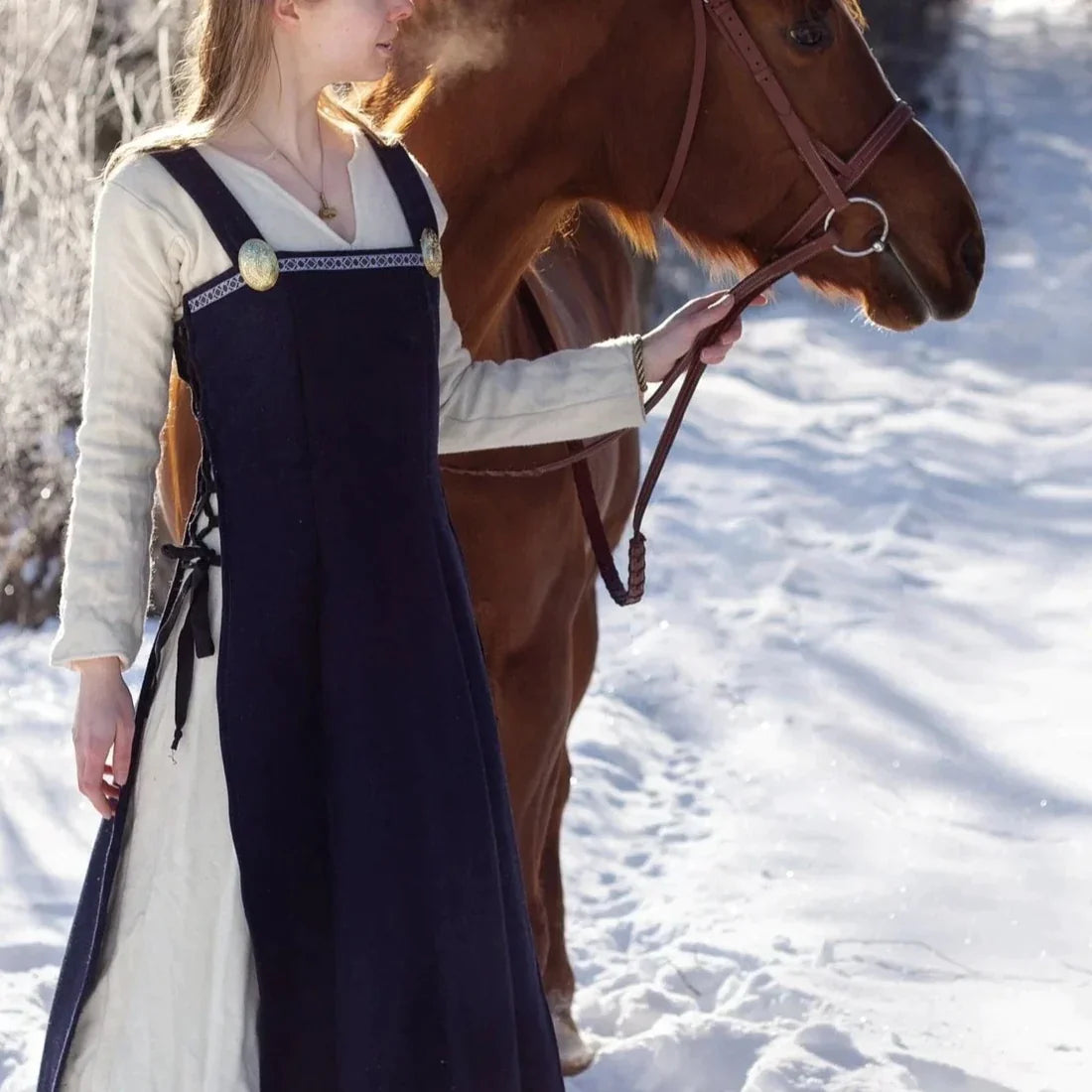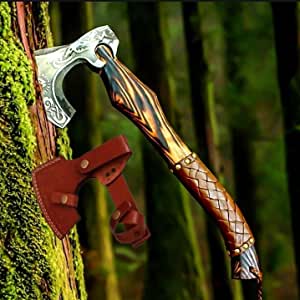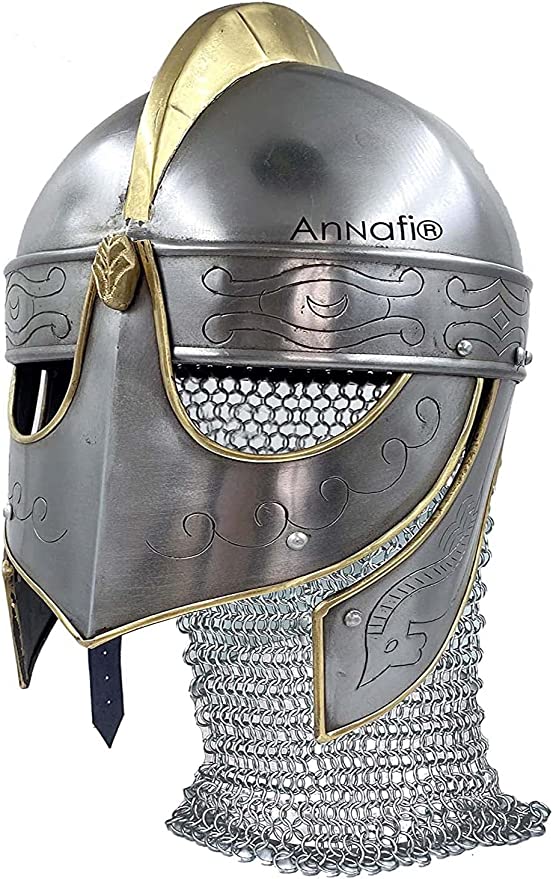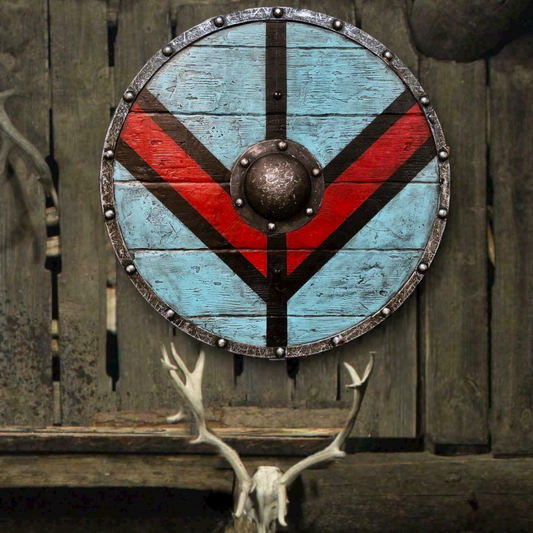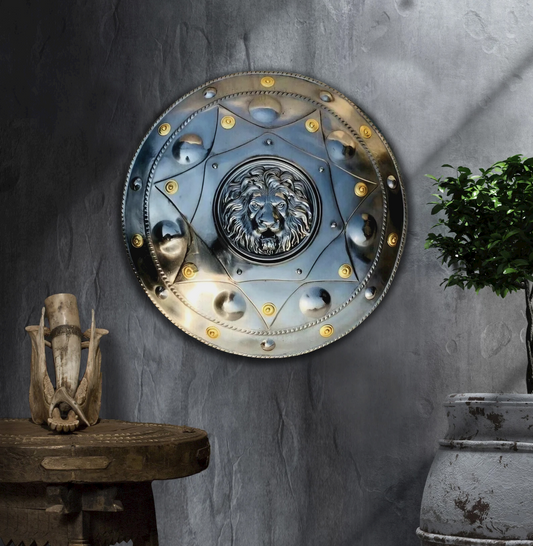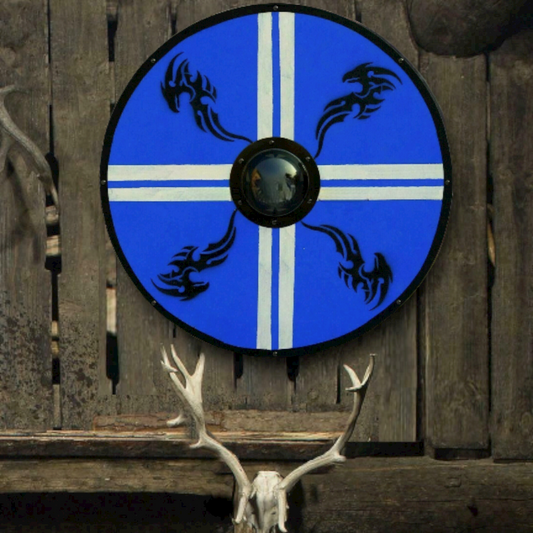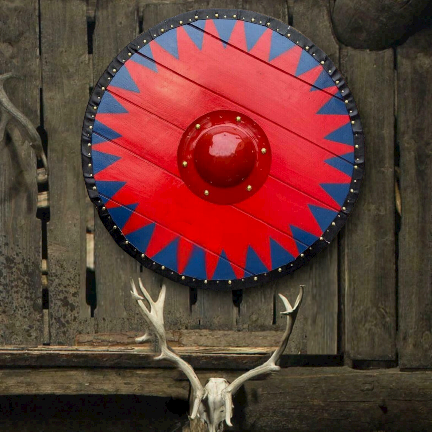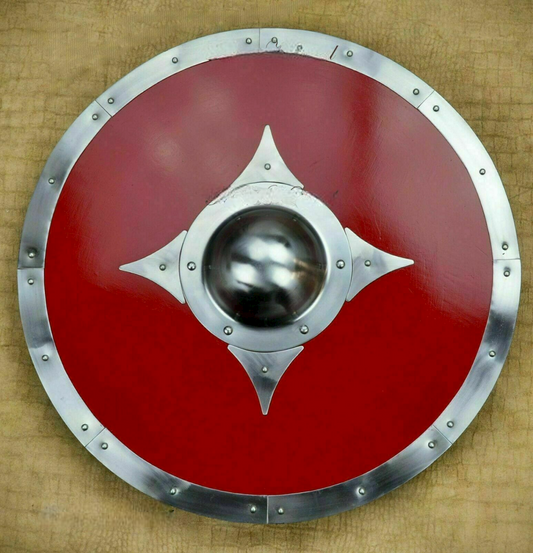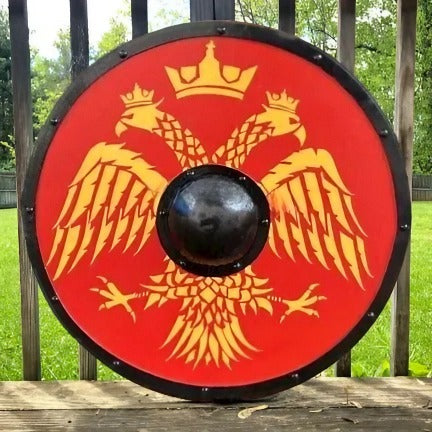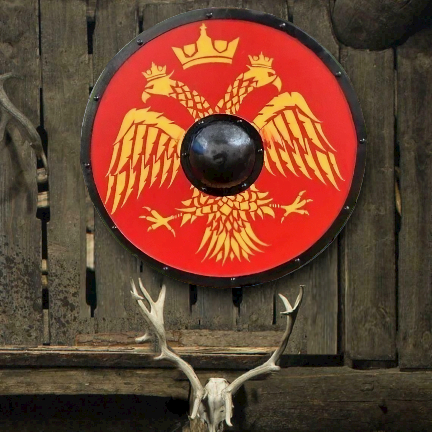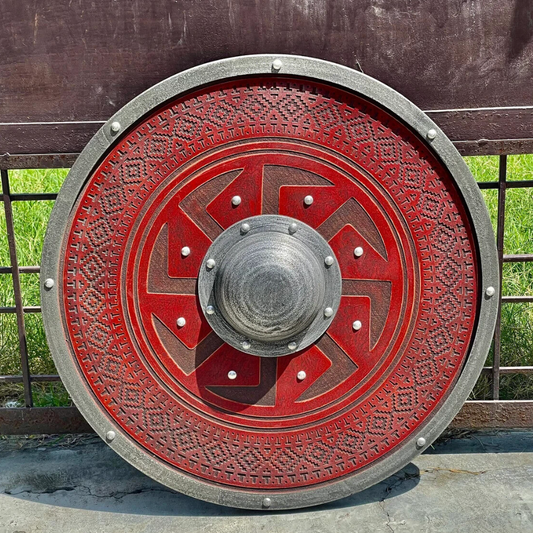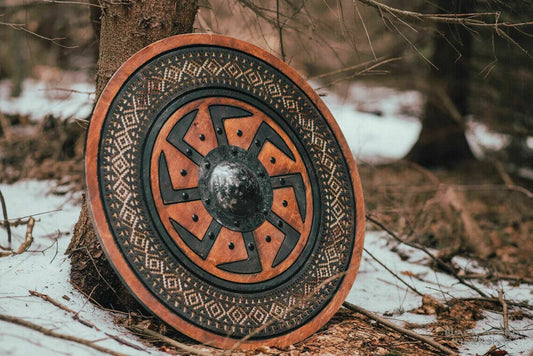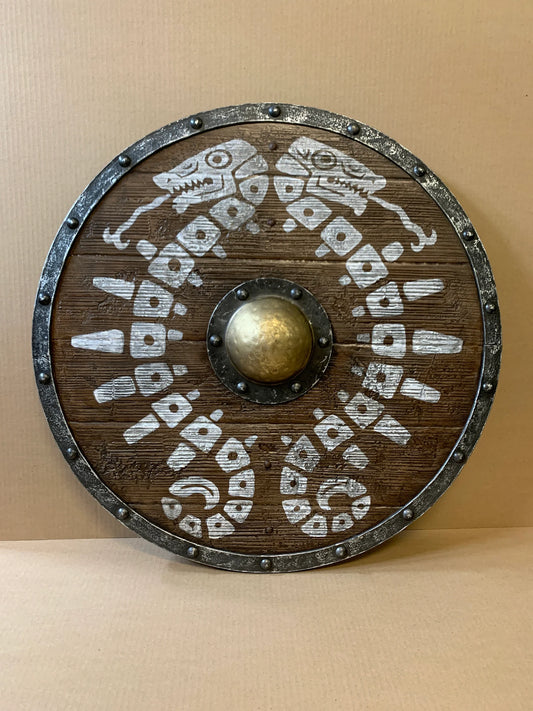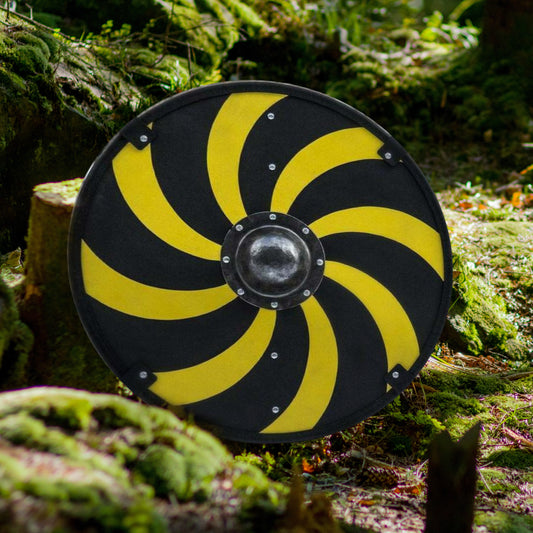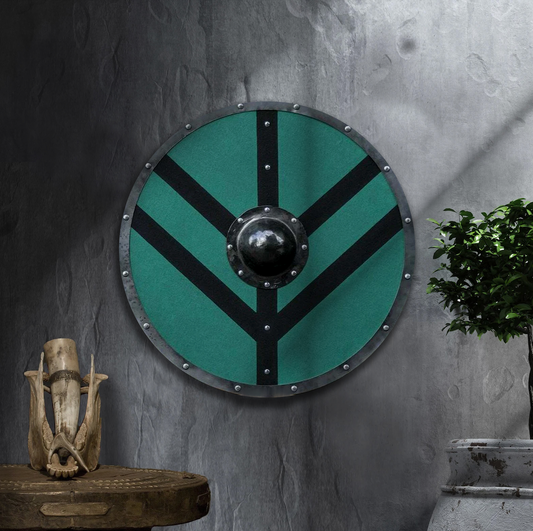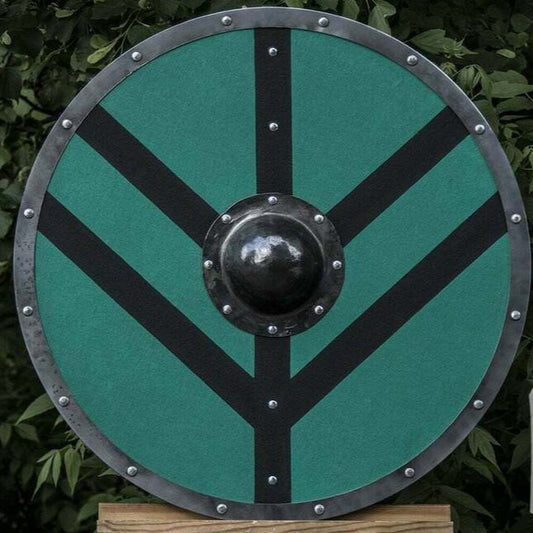At Drakka Viking Shield, you will find a wide variety of Viking Shields for sale. From deeply traditional pieces which call upon knotwork and historic findings. To modern renditions which pay homage to interests you may have alongside Viking lore.
All Shields Carved Shields Plank Shields Smooth Shields
Now, for a bit of history. A variety of wood was often used in the planning of Viking Shields. Depending on where a warrior happened to be at the time and what was available locally. Oak and maple were very heavy but highly prized, but often difficult to get. Because these trees were generally larger and took many men to fell, as well as more high-quality tools to plane, slow-growing, and often not found in great numbers. Birch and other woods were also common. A lesson from history is sought to be taken. And birch is used in the crafting of many of our carven shields.
About Viking Shield Bosses
Not all Viking shields had the familiar domed boss, either: generally, poorer Viking raiders could afford relatively few metal accents, or those living far from a quality forge, often had to make do with a flat-front all-wooden shield. If a Viking could afford metal, often the first thing he purchased was a helm, which as you might understand would often be more likely to be life-saving in pitched battle. From time to time, such Vikings might even loot the helms of enemies in battle and ask smiths to fashion bosses from this metal. This is why in some historical digs you will see different kinds of domes, and even conical structures, to some Viking bosses.
Drakka Viking Shield provides a number of Authentic Viking shields that are perfect for completing any warrior's ideal Viking image. We have what you are looking for, either a decorative shield or a fully functional shield.
Our specialty is in offering the round Viking shield. Traditionally this circular defense the most common type of Viking shield, as well as a common medieval shield. This provided a convenient shape that was easy to use, easy to manufacture, and easy to carry.
The Plain Wooden Norse Shield
A portion of our Norse safeguards is left plain, including only wood grain and steel. While others highlight great plans that highlight images of the acclaimed Norse berserker. As well as the mythical serpents and mayhem images that have become related with Viking society today. It depends on you if, as a Norse fighter, you need to convey a Viking safeguard or not. Despite the fact that greatness and wealth are simpler to appreciate when you endure the fight, and a decent, practical Viking safeguard like the ones presented here at Medieval Armor are absolutely an effective method for working on your chances of endurance, as well as your exemplary Viking picture.
The Vikings were one of the most feared and formidable warrior societies in history. They were known for their skill in combat, and their use of weapons and shields was key to their success. Among their weapons, the Viking shield was perhaps the most essential, as it provided protection against enemy attacks and allowed the warriors to advance on the battlefield.
In this article, we will explore the different types of Viking shields, their construction, and their use in battle. We will also examine the tactics and strategies employed by Viking warriors to make the most of their shields and to gain an advantage over their enemies.
Types of Viking Shields
The Vikings used several types of shields, each with its own strengths and weaknesses. The most common types of Viking shields were the round shield, the kite shield, and the flat shield.
Round Shields
The round shield was the most iconic Viking shield. It was circular in shape and usually made of wood, with a metal boss or umbo in the center to deflect blows. The shield was typically about 32 to 36 inches in diameter, with a thickness of around 0.5 inches. Shield leather coverings often painted with intricate designs or motifs.
Round shields were lightweight and versatile, making them suitable for a variety of combat situations. Both foot soldiers and cavalry used shields, and their circular shape made them easy to maneuver in tight spaces. The metal boss in the center of the shield was also useful for striking opponents in close combat.
Kite Shields
The kite shield was another common type of Viking shield. It was longer and narrower than the round shield, with a pointed bottom that resembled the shape of a kite. Kite shields were typically made of wood and covered in leather, with a metal boss in the center for protection.
Kite shields were popular among Viking cavalry. Their shape allowed riders to protect their entire body while still being able to wield a weapon. They were also useful in formation combat, where they could be used to form a wall of protection against enemy attacks.
Flat Shields
The flat shield was the least common of the Viking shields. It was rectangular in shape and made of wood, with a metal rim and boss for added protection. Flat shields were typically carried by Viking warriors who were fighting on foot. They needed a shield that could be propped up against the ground for added stability.Construction of Viking Shields
Viking shields were typically made from wood, usually oak, which was strong and durable. The wood was cut into a circular shape for round shields, or a kite shape for kite shields. And then treated with linseed oil to make it waterproof and more resistant to damage. Once the wood was prepared, it was covered in animal hide, typically from a cow or horse. The hide was soaked in water and then stretched tightly over the wooden frame, where it was secured with metal rivets or small nails. The leather was then left to dry and shrink, which made it even tighter on the frame.
Smiths attached a metal boss or umbo to the center of the shield. The bosseasily deflect blows from enemy weapons because it was made of metals such as steel, iron, or bronze. It was also a striking surface in close combat. Finally, they painted shields with designs or motifs that were unique to each warrior. These designs often included the warrior's family crest, symbols of strength or bravery, or religious symbols.
Use of Viking Shields in Battle
Shields in battle was carefully planned and executed and they became an important part of a warrior's kit. Viking warriors employed a range of tactics and strategies to gain an advantage over their enemies. The Viking shield wall is one of the most iconic military tactics of the Viking Age. It was a formidable formation that allowed Viking warriors to stand their ground and resist enemy attacks, even when outnumbered. In this blog post, we explore the history of the Viking shield wall, its use in battle, and why it was such an effective strategy.
Origins of the Shield Wall
The shield wall was not a unique invention of the Vikings. This common tactic used by many ancient armies, including the Greeks, Romans, and Anglo-Saxons. The Vikings, particularly skilled at using the shield wall, eventually used it so well that it became a hallmark of their military strategy.
The origins of the Viking shield wall can be traced back to the Bronze Age, when soldiers first began using shields for protection. Over time, the use of shields evolved, and warriors learned to use them not only for defense but also for offense. The shield wall was the ultimate expression of this evolution, a formation that allowed warriors to protect themselves while also pushing forward and attacking their enemies.
How the Shield Wall Worked
The Viking shield wall was a formation in which warriors stood shoulder to shoulder, with their shields overlapping to create a barrier. The front row of warriors held their shields high, while the second and third rows held their shields lower, creating a sloping surface that made it difficult for enemy missiles to penetrate the formation. The warriors in the shield wall armed themselves with swords, spears, and axes. The front row of warriors would use their weapons to strike at the enemy, while the second and third rows would use their shields to provide cover.
The shield wall was not a static formation. It moved forward or backward, depending on the situation. When facing a charging enemy, the shield wall would advance to meet them, using their shields to absorb the impact of the attack. When facing archers or other missile troops, the shield wall would stand its ground, using their shields to create a protective barrier.
Why the Shield Wall was Effective
The shield wall was a highly effective tactic for several reasons. First, it provided excellent protection for the warriors within the formation. The overlapping shields created a nearly impenetrable barrier that could withstand even the most determined enemy attacks.
Second, the shield wall allowed Viking warriors to fight as a cohesive unit. By standing shoulder to shoulder, they could coordinate their movements and attacks, creating a more effective fighting force than individual warriors fighting alone.
Finally, the shield wall was psychologically intimidating to enemies. The sight of a line of warriors standing shoulder to shoulder, their shields raised high, was a fearsome sight that could strike fear into the hearts of even the bravest opponents.
The Importance of the Shield Wall
The shield wall was a formidable military tactic that allowed Viking warriors to stand their ground and resist enemy attacks. It was a highly effective formation that provided excellent protection, allowed for coordinated attacks, and was psychologically intimidating to enemies. While the shield wall was not unique to the Vikings, they were particularly skilled at using it. And it became a hallmark of their military strategy. Today, the shield wall remains an iconic image of Viking warfare, a symbol of the fierce and formidable warriors who once roamed the seas and conquered lands far and wide.
Is the Viking shield Wikipedia page accurate?
Yes, the Wikipedia page for Viking shields and broadly for Vikings is not only accurate but often contributed to by historians who study vikings! If you read cited passages on Wikipedia, they are likely to be accurate and full of information.
What was the original Viking shield name?
Vikings were people of many technical regions, from modern Russia to some parts of the UK at varying points in history. Depending on the language a viking spoke and where he was from, the viking shield name might be different... but most vikings called a shield a rönd.
What are some Viking shield facts?
Some shield facts include: most Viking shields were made of heavy hardwood without metal since metal was expensive. The more metal components a shield had, the heavier it was to carry, and the more wealthy its owner was likely to be.
Do you have Viking shield for sale?
We do have shields for sale in three categories: Carved, Plank and Smooth. We also offer many other handcrafted Viking items such as jewelry.
Is there a Viking shield museum?
There are no museums just for shields of the vikings, but there are many Viking museums around the world which carry many archaeological and authentic shields.


